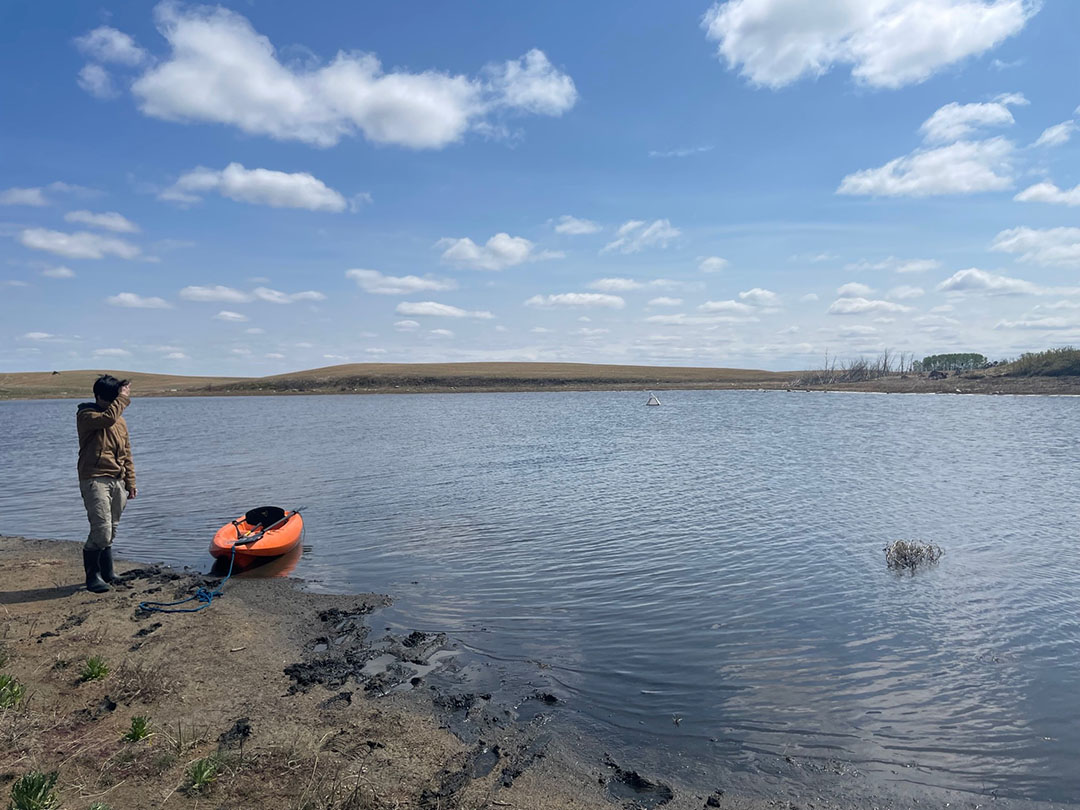
USask researchers navigating complex systems to preserve Prairie wetlands
New research looks at the numerous impacts of wetland drainage.
By Erin MatthewsFrom grasslands to boreal forests, Saskatchewan has some of the most dynamic ecosystems in the country and is home to equally complex water systems. Researchers like Dr. Colin Whitfield (PhD), associate professor in the School of Environment and Sustainability and member of the Global Institute for Water Security at the University of Saskatchewan (USask), are keeping a close eye on Saskatchewan’s water landscape.
“As a biogeochemist and environmental scientist, I’m really interested in understanding the impacts that various stressors have on ecosystems,” said Whitfield. “I often look at the watershed scale, understanding how movement of water across landscapes affects processes like clean air and water.”
Saskatchewan is home to roughly 4.6 million acres of wetlands which blanket more than 47 million acres of agricultural land. Known as the Prairie Pothole Region, these shallow pools of water were left behind after glaciers receded and have been a part of the landscape for thousands of years.
Using a new modelling framework, Whitfield and his colleagues illustrated the significance of wetland drainage and the complexity of water systems in the Prairie region in a recently published paper in Facets.
“Wetlands are abundant on the Prairie landscape, but in areas used for agriculture, they can pose challenges for production,” said Whitfield. “On the flipside, they are incredibly valuable to society for the ecosystem services they provide.”
Whitfield and his colleagues found that the drainage threshold (where impacts start to become noticeable) is as low as 10 per cent. Whitfield said these findings can help provide more context to the complexity of water systems on the Prairies and be used to help develop wetland conservation policy.
Wetlands play an important role in water quality on the Prairies. Acting as sponges, wetlands are able to retain more water on the landscape and can trap and remove agrichemicals or nutrients.
Excess nutrients in rivers and reservoirs can complicate drinking water treatment processes and increase the risk of toxic algal blooms, which have big impacts on recreational activities. Each year, Saskatchewan lakes experience large algae blooms that are made worse by nutrient pollution.
According to Whitfield, wetlands on agricultural land are beneficial for storing water, which can prevent water runoff and limit downstream flooding.
“With fewer wetlands, we have more water and more nutrients leaving the landscape and running into rivers and lakes. We also have more frequent flooding.” said Whitfield.
Whitfield hopes his research can help educate and inform about the importance wetlands play in the environment and for society.
“The big challenge is how do we effectively manage these systems so we can have healthy agriculture but also have a healthy environment,” said Whitfield.

